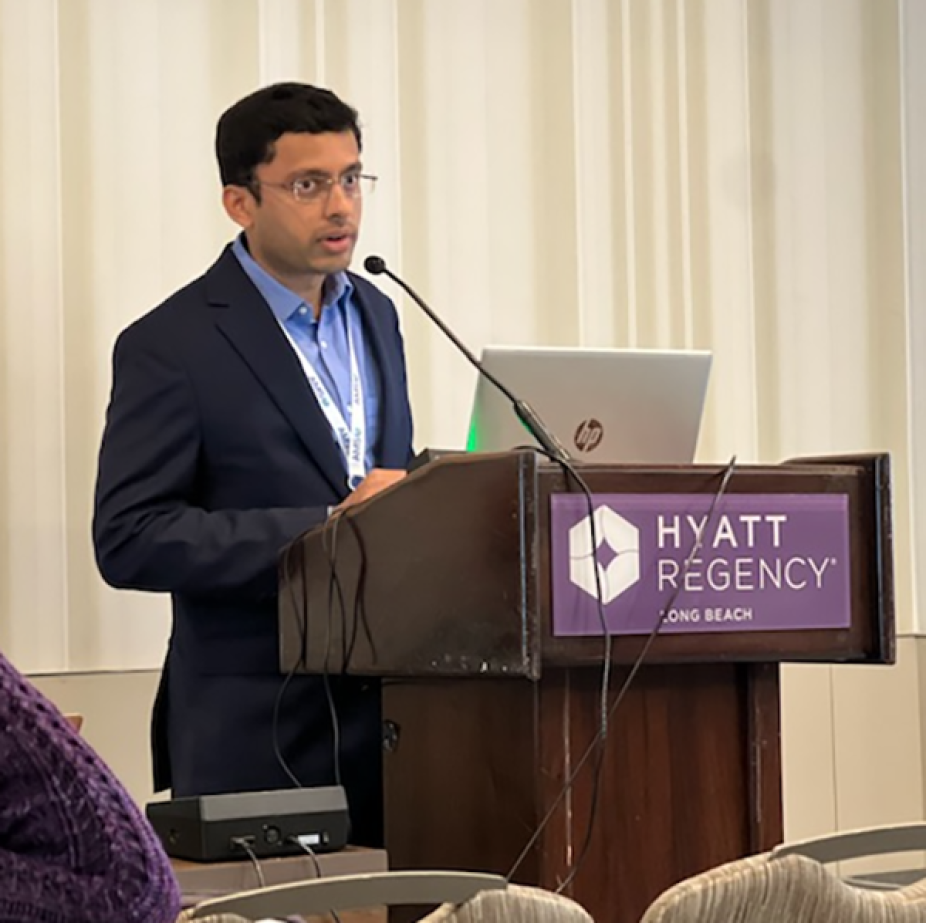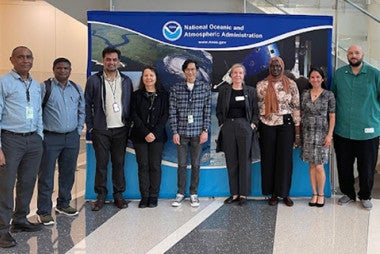WINGS Fellow’s Research on the Origin of the Monsoon Onset Vortex (MOV)

WINGS Fellow Shreyas Dhavale presented results of his research on the Monsoon Onset Vortex at the 36th Conference on Hurricanes and Tropical Meteorology of the American Meteorological Society in May. He was recently named a 2024 recipient of the John S. Irwin Award for Scientific Excellence at North Carolina State University.
The Indian Summer Monsoon, active from June to September, delivers about 80% of India’s annual rainfall in just four months. In late May or early June, just ahead of the core monsoon period in July and August, atmospheric conditions are sometimes perfect for the formation of a whirling vortex over the Arabian Sea – 60% of the time in fact. This phenomenon is called the Monsoon Onset Vortex (MOV), and it is precisely what interests Shreyas Dhavale.
Dhavale, a Ph.D. candidate at North Carolina State University, is a recipient of the Weather Program Office (WPO) Innovation for Next Generation Scientists (WINGS) Dissertation Fellowship that is supported by the NOAA Weather Program Office and administered by UCAR’s Cooperative Programs for the Advancement of Earth System Science. The WINGS Fellowship provided an opportunity for Dhavale to learn more about NOAA’s Unified Forecast System, a schema for modeling Earth systems, and apply it operationally aiming to improve forecasting of the MOV.
“The WINGS Fellowship has been important because it introduced me to the world of numerical modeling, specifically, the research that I am doing as part of the Fellowship involves working on NOAA’s Unified Forecast System. NOAA is interested in coming up with new and better versions of weather and climate models to improve weather and climate forecasting. So basically, it is operationally oriented research, and this is what I find very interesting: how are our new models being developed and what are the things that we need to consider?”
“There has not been a comprehensive study which has looked at this particular phenomenon over the last 41 years,” notes Dhavale. His research is analyzing cases – 23 in all – of MOV development over that period using satellite and reanalysis data to tease out conditions that support its formation.
The MOV, says Dhavale, is responsible for situating – and sometimes stalling – the monsoon over Southern India and slowing or even preventing its progression over the West coast and interior of the country. In addition, MOVs frequently intensify into tropical cyclones that create hazardous conditions for the densely populated coastal regions. For this reason, it is important to understand more about the mechanism of its Formation.
MOV formation is predominantly shaped by a vertical alignment of cyclonic vortices in the lower and middle troposphere that develop from shallow and deep convection over the Arabian Sea. Another contributing factor to MOV formation is a strong band of winds known as the Somali Jet or Findlater’s Jet. These winds blow off the East Coast of Africa towards India at an altitude of 1.5 km during the monsoon. The energy from the Somali Jet helps transport moisture from the Indian Ocean and the Arabian Sea, supporting growth of the MOV and ultimately, monsoon rainfall as it pushes into India. In some years, the MOV track can prevent moisture from reaching Southern India, resulting in less rainfall during the MOV period.
“One reason the research is important to me is that I am born and brought up in Mumbai, India and observed the onset of monsoon every year since my childhood. I’ve seen that some years this weather system [Monsoon Onset Vortex] forms and it can disrupt the onset of the monsoon or help the onset. It is like a double-edged sword depending on its track and intensity – it can either bring in the rains quickly or take the rains away from the Indian coast and delay the onset of monsoon resulting in an extended prolonged summer.”
“From humanitarian, hydrological, and agricultural perspectives it is important to know when the rainy season is going to start,” says Dhavale. “In addition, if we can determine whether it will have a slow or aggressive start, that is important to know, too.”
Dhavale recently shared the results of his research at the 36th Conference on Hurricanes and Tropical Meteorology of the American Meteorological Society. He is also the 2024 recipient of the John S. Irwin Award for Scientific Excellence at North Carolina State University, an award that “recognizes graduate students in atmospheric sciences who exhibit a commitment to consistent and high-quality research in meteorology.”
A sincere congratulations to you Shreyas!









